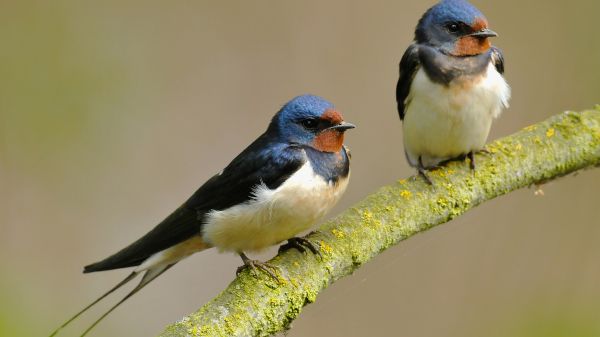Pedagogical Principles in Environmental Education for Young Children. About a Couple of Swallows and an Ugly Bird House.

This blog is the third of a series of eight discussions on principles, processes, and strategies involved in early childhood education, including environmental education. The first blog titled “Mastering pedagogy in environmental education for young children. Or what happens after lifting the rock, finding the worm, and putting it back?” has established that a holistic approach to education comprises three interlocking bodies of knowledge:
- The concrete mind allows us to think with our whole body using our senses and intuition.
- Literacy/alphabetization permits us to think with our intellect, using representations and applying operations like deduction and induction.
- Opsistiation exposes our minds to large amounts of information provided by computers, using images and sounds and stratified significant layers of knowledge.
The second blog of this series of eight is titled: “Pedagogical Principles in Environmental Education for Young Children. Let them play! Leave the thinking to adults.” Its analysis proposes three principles that govern the concrete mind, literacy/alphabetization and opsistiation: senses, time, and roles.
This blog will discuss the principles of information, environments, and educational objectives. Later blogs will examine how different processes and strategies are at work in our three bodies of knowledge. A chart listing the concepts will be provided in the aftermath.
The principle of information influences the three bodies of knowledge in different ways. When using our concrete mind, we access first-hand information through our senses. We use feelings, impressions, intuition, imagination, visions, and dreams and let our mind manage the information. Thinking with our concrete mind implies being active and being a “participant”.[1] When using literacy, young children still access first-hand information because they use manipulation, exploration, and experimentation. Playful and educational materials are made available to them, as well as elements in natural settings. They encounter them with their senses and their feelings. They are by nature active in their ways of being because of their youth. They are “explorers”.[2] Older children going through the process of alphabetization are led towards abstract thinking using symbols and representations, and their minds are taught to work with syllogisms, algebra, and algorithms. They learn to get information through written texts which is second-hand information. They learn logical processes like deduction, induction, and inference. But most important they learn to imagine. They are “creators.”[3] Older children are made to adopt a passive disposition. Acquiring proper posture to read, to write and to think requires many years of schooling, sitting on a chair and listening. Opsistiation or education through the images and sounds of computers is the favored means of acquiring information for younger generations. Images offer complex information composed by different people with specialized knowledge about colors, sounds, disposition, looks, rhythms, and animation. Images and the sounds associated to them are second-hand or multi-hand information requiring memory, association, and classification. Information through images and sounds makes children mere “spectators”[4] who retain or reject information based on likes or dislikes. This information is then stratified, cumulated, or regrouped by the mind. The information becomes a body of knowledge capable of taking a direction, speed and intensity which is subtracted from the critical mind, escaping moral, ethical or cultural frames.
Let us consider here activities initiated by three and four-year-old children observing a couple of swallows flying above the outdoor playground of their daycare center.
The birds arrived at the end of the month of May and elected to nest in an old faded and battered bird house that had been installed high up on the wall of the center a couple of years before. It was too high to reach and replace but new colorful birdhouses had been added to the wall in the hope of attracting nesting birds as an educational activity for the children. As the new bird houses remained empty, educators and teachers were disappointed, but the children became interested in why the swallows chose the ugly bird house. One afternoon as they were staring at it, the swallows flew high up in the sky and then swooped down with lightning speed over the children’s heads chirping away. Up and down again for the longest time. At first, some children were afraid thinking they were being attacked.
But soon the sense of delight of other children spread to everyone as they observed them speeding and twirling in the sky. As they learned to call them over by imitating their chirping and whistling a passion was sparked that would last all summer.
The educators and teachers working within the educational objectives of literacy/alphabetization had selected the theme of birds as part of their spring activities for the children. They purchased books about and templates on birds. They printed out drawings of birds to color and selected puzzles illustrating different species of birds. They learned with the children the names of different birds and tried to identify the local ones. They practiced a song about birds and made bird costumes for a play. Specifically, the educators and teachers support acquiring information, knowledge, and skills to prepare young children to develop the later abilities of “conceptualization and creative processes through reading and decoding.”[5] They are aware that young children must prepare for “the reading circuit: from phonemes and their connections to letters, to the meanings and functions of words and morphemes in sentences, to an immersion in stories, to daily elicitation of the children’s own thoughts and imagination in speaking and writing.”[6] Young children are made to practice concentration and focus and are made to control their bodies and impulses. They are introduced to symbolism by observing, naming, identifying, and imagining. They are then ready to start to conceptualize, solve problems and create. The creative processes will prompt them into action by transferring their knowledge.
The educators and teachers also interested in the educational objectives of opsistiation used computers to develop the children’s technical skills in computer sciences. By doing so, the children gather favored elements within the pictures they see. “Pictures require of the observer an aesthetic response. They call upon our emotions, not our reason. They ask us to feel, not to think.”[7] Children use their feelings and emotions and establish their likes, and dislikes. The choices they make are identity markers. Regrouped they become knowledge strata. Multiple strata of information and knowledge compose identities, rejecting other types of knowledge strata. Using computers, the children might look up swallow-colors-eggs-habitat-food. Or they might be interested in swallow-barn-wood, swallow-bank, swallow-species. And again, they might compare swallow-cardinal-finch-sparrow-Tweety bird. They look for kits of information to use that might engage them into action and develop memory, classification, organization, and referencing.
The educators and teachers working with the educational objectives to develop the children’s concrete mind will favor appreciation of general contexts first using the children’s senses and intuition. They will appreciate the outdoor playground and get a sense of the weather, the wind, and the temperature. They will observe the context in which the playground is located near the farmer’s field. They will bring the children’s attention on the outstanding elements or on the disturbances in the general context, the swallows diving on the children and springing upward in the sky, the insects blown in from the field. Then they will focus on information, knowledge, and functions about the swallows and appreciate how lucky they are that the individuals in the ugly bird house have elected residence in their playground.
They might realize that the ugly bird house looks like a piece of old wood with a cavity inside right and proper for a swallow’s nest, free of the smell of paint, glue, and the human notion of prettiness.
The principle of information with its first-hand, second-hand, and multi-hand information influences the bodies of knowledge of the concrete mind, literacy/alphabetization and opsistiation in different ways. The educational objectives valued within the bodies of knowledge are also different, focusing on the information first for literacy/alphabetization and opsistiation, panning it out to contexts while the concrete mind concentrates on the contexts first, panning in on information after. This brings us to the principle of environment concerning our bodies of knowledge. Literacy/alphabetization takes place in rooms with artificial materials and use manipulation, conceptualization, and imagination. It enables children to create. Opsistiation takes place in rooms with screens and uses representation, virtual reality, and augmentations, which in turn create strata of knowledge and multiple possible perspectives. It enables children to observe and cumulate many views. The concrete mind is developed in nature, in a specific environment within the perception of a reality calling on verification and experimentation. It enables children to experience their human condition in a specific reality.
The combined knowledge about swallows on paper, on screens and in reality, articulates all the human capabilities within its condition, and provides a complete, more holistic education. To really appreciate the swallows, one must experience them swooping by the top of one’s head, chirping in the sunshine high up in the trees, flying up in the sky and diving to the earth full speed. Then, and only then, will one experience the feeling of felicity that the knowledge that summer has arrived can bring.
My next blog will be the fourth of a series of eight. It will discuss processes that influence our three bodies of knowledge: the concrete mind, literacy/alphabetization and opsistiation.
[1] Louv, R. (2008: 15). Last Child in the Woods. Saving our Children from Nature-Deficit Disorder, Algonquin Paperback.
[2] Major, S. (2014: 95). Mamès, profèsorn oun kinder likth. Éducation en petite enfance en CPE. Le cas des femmes hassidiques Belz en services de garde en milieu familial accrédités, Doctorate dissertation, Anthropology, Université de Montréal.
[3] Illich, Y. (2004: 191). La perte des sens, Fayard.
[4] Louv, R. (2008: 15).
[5] Illich, Y. (2004: 191).
[6] Wolf, M. (2018: 161) Reader, come home. The Reading Brain in a Digital World, Harper.
[7] Postman, N. (1994: 73). The Disappearance of Childhood. Vintage.
